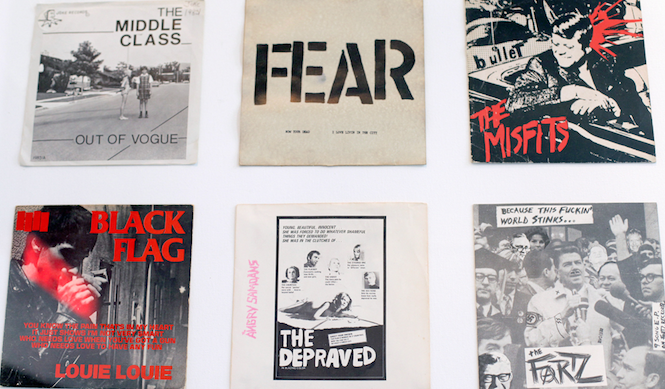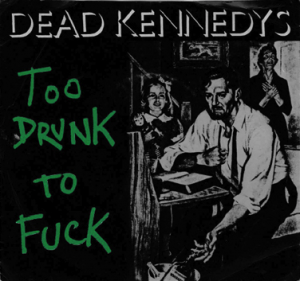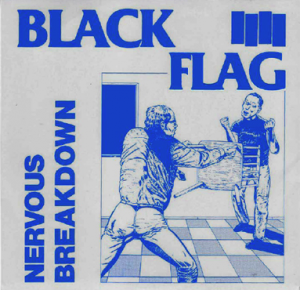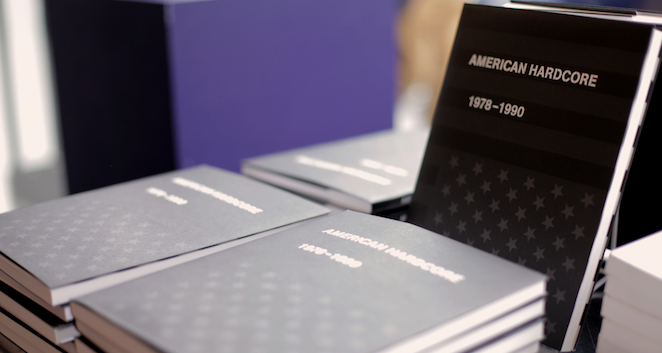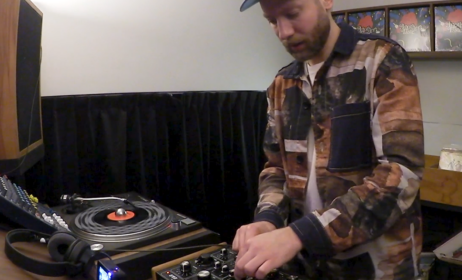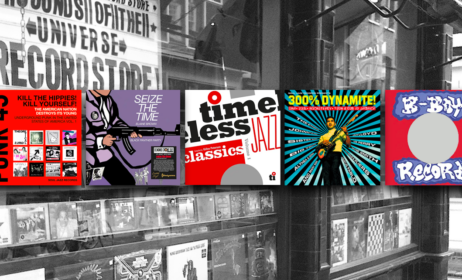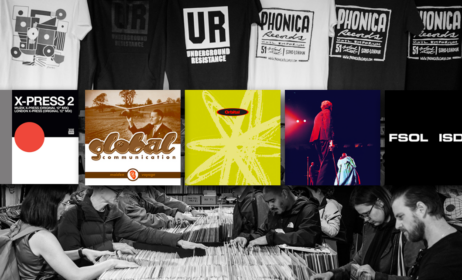Published on
April 22, 2013
Category
Features
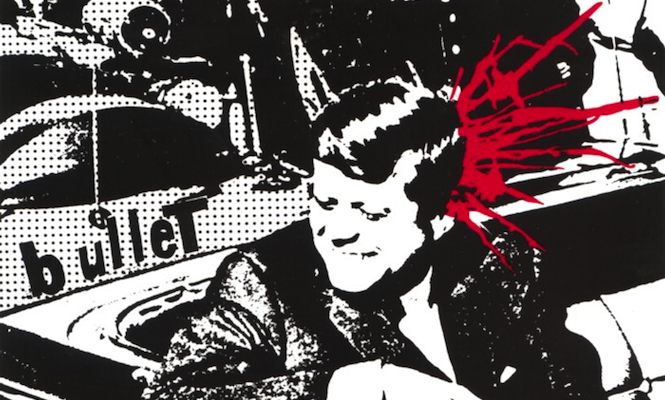
With the exhibition American Hardcore: 1978-1990 at The Vinyl Factory in full flow we spoke to curator and founder of The Mott Collection Toby Mott about how the show tells the story of one of the most unique movements of all time.
How do you go about curating a visual history of a music genre? For collector and artist Toby Mott the answer lies not in photos, posters and memorabilia, but in the records themselves. Brought together for an exhibition at The Vinyl Factory gallery in Chelsea, the fifty original US hardcore punk 7” sleeves on show represent the essence of a genre that captured the imagination of the suburban American youth from the late 70’s through to the early 90’s.
Both disparate and fiercely tribal, the aesthetic of the US hardcore movement is among the most iconic and potent in music history, and having seen the exhibition, we were keen to find out a little more from Toby about what inspired him to bring these underground relics into the spotlight once more.
You’ve put on exhibitions of punk sleeves in the past, notably the Jubilee exhibition in 2012, but where did they idea for a US hardcore exhibition come from?
We like to work with genres that are visually strong and also could be termed ‘sub-cultures’, so not a dominant culture. This outgrowth of punk in the USA was a much more suburban-orientated movement with distinct groups in different cities and suburbs which unified and became ‘hardcore’. This was a much more stripped down, raw version of punk that also moved on from the Ramones and Blondie etc and was very DIY.
Was this the main difference between punk and hardcore?
It was a much more raw version of what had gone before and it became more and more distinctive over the decade of the 80’s as it developed. It never really became colourful. I mean there’s a limited palette, visually. It’s pretty much all black and white, with a bit of red here and there. That’s very appealing.
Given that the scene was very dispersed to begin with – not only within cities and specific suburbs but across the country with the LA and east coast scenes – is it surprising that there is such a distinctive collective aesthetic?
I guess with these movements, whatever they are, there’s a kind of zeitgeist moment. You’ve got different people and bands doing different stuff independently in cities which, in America’s case, are thousands of miles apart, but there is this kind of communality to it all.
Obviously now with the internet things move and ideas change much quicker, but back then in the 80’s it was funny, there were people working separately but in a similar way.
Since you grew up in London, did any of this filter over or was it confined to the States?
The first wave of American punk did – there was a well-known concert by the Ramones at the Roundhouse that lots of people attended. But this stuff [hardcore] also filtered through and in fact some of it was on an English label. There were always record shops like Rough Trade that would have music from different places and be interested in what was happening out in the States. So, it was travelling, and of course, Dead Kennedys and Black Flag were quite big bands.
Are the sleeves ones you’ve acquired specifically for the show, or were they part of your original collection? What has informed your choices?
Well I put them together for their visual appeal. There are some very important ones musically, like The Middle Class “Out Of Vogue” – that’s considered the first hardcore record in the distinction between punk and hardcore. I’m interested in the movement and its aesthetics, so I can collect things sometimes just on their visual appeal, if not their musical appeal. That said I like the energy of this music and its message.
The sleeves themselves were obviously produced quite quickly, and part of the appeal was that they were so resistant to commodification. The artists certainly weren’t being precious about the designs as ‘products’. Does it alter their original intention when they are framed and put in a gallery?
It elevates it. When you put things in art galleries, you remove them from their natural habitat and you elevate them to art and therefore you can view it in a different way, in a sort of isolated, clean, neutral space.
You can also remove its meaning, like its politics say, and it can become neutral. It’s a clean way to view these things, out of a record shop or a punky environment.
Was hardcore not largely a-political?
It was, but there was a continuous anti-Reagan theme in a lot of these records. There was a sort of autonomy to it; to take control of your own life, reject the government and then there’s a lot of antagonism of the police.
…in a way that was uniquely American?
I would say this music is uniquely American. I mean it obviously influenced bands here and abroad but it’s a distinct American genre.
When the singles were produced, what kind of runs were being made? Was there much in the way of distribution?
They were very small runs, often only for their own communities. They weren’t even for America, maybe just for California. There were no big labels involved and no big distributors so it was a pretty DIY-culture.
So even as pieces of art they are fairly rare?
Oh yeah, this material is rare.
Do you have any favourites among the ones on show?
I like the cut up collages – the anti-aesthetic as it’s commonly called. I like Fear, using the stencil, obviously Raymond Pettibon working with Black Flag, and then I like the fact that this stuff was just generated out of a culture without a particular author.
With the exception of Raymond Pettibon, who was later to become a well-known artist, it’s all pretty much anonymous or band members or friends of the band and a very black and white, hard-edged visual style. It’s very attractive to do a project with that material.
The sleeves on show are presented chronologically from 1978-1990 in the catalogue that accompanies the exhibition. What informs the dates that frame the collection?
Middle Class “Out of Vogue” in 1978 was the first hardcore record that is agreed upon by hardcore experts and up to 1990 because I’m not sure that it really developed after that, although people will probably argue otherwise. It was what it was. I think [slightly more than] a decade can encompass what they were trying to say.
The exhibition will run at The Vinyl Factory Chelsea at 91, Walton Street SW3 2HP until 4th May 2013. Click here for more info about the show and the limited edition publication.


